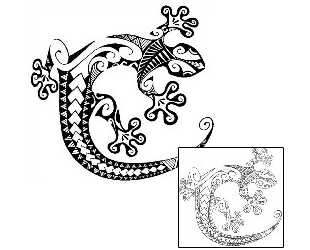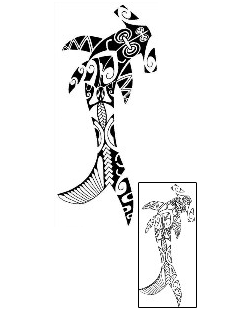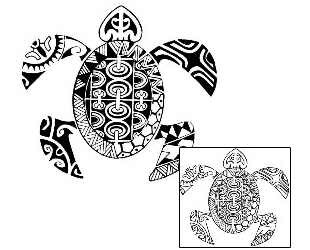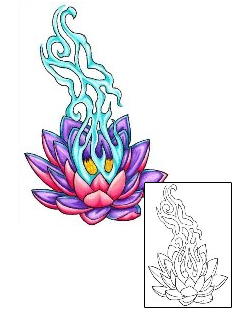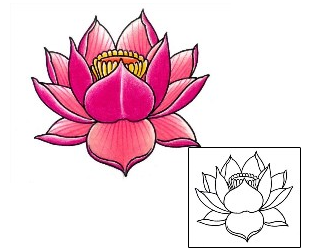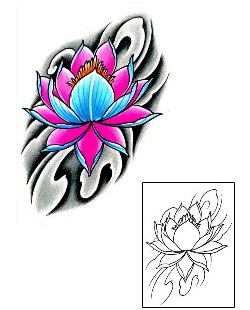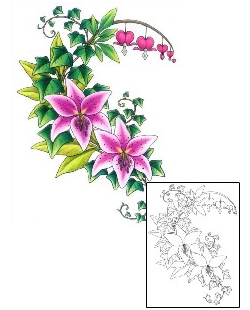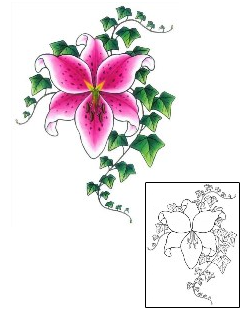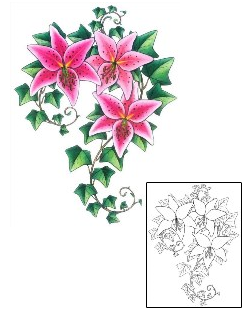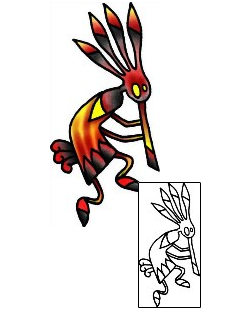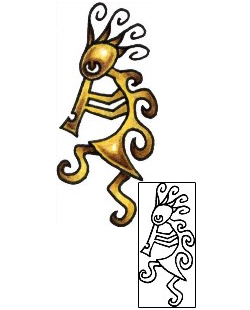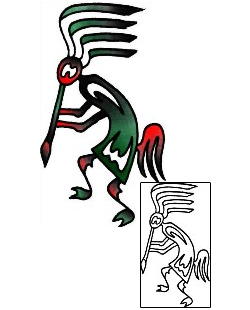Nestled on the tiny island (okay, not so tiny) of New Zealand, the Maori tribe has provided us with the beautiful (but entirely painful) body art of facial tattoos. In fact, as a tribute to their amazingly unique tribal tattoo designs, the art of tribal facial tattoos is also interchangeably known as Maori tattoo designs.
Of course, if you walk into a tattoo parlor in search of a Maori tattoo, what you'll get is a far cry from the traditional art form. And it isn't just the instruments that have changed. Today, all you have to do to receive a Maori tattoo, or any other tribal tattoo design, is to choose a design from a gallery (or create one yourself) and have the money to pay for it. Centuries ago, however, before you could receive a tribal tattoo, you had to earn it!
To the people of the Maori tribe, tattoo was much more than a decorative art form; it was an integral part of their lives and their identities. The process used was long, drawn out and painful. But when your time came to receive one, there was no "chickening out". For the Maori, tattoos were a rite of passage, and without them, you risked losing your place in the clan's social standing.
A Glimpse of the Life of the Maori
In the lives of the Maori people, there is one aspect of life and religion that everyone equally understands. It is the strongest force of their lives and their world, and it is known by the native term "tapu".
Loosely interpreted, the word tapu means sacred, or refers to a spiritual restriction or an implied prohibition. In this respect, it resembles our word, taboo. But, whereas we seem to quickly get our hands all over anything regarded as taboo, in the lives of the Maori, the word tapu was closely associated with the idea of "untouchable". For them, anything tapu was forbidden to come in contact with humans, sometimes even forbidding humans to even approach these sacred objects, places, people or ideas.
And, in case you're wandering how often a good Maori would step across the boundaries of the tapu, the answer is only once. Upon doing so, it wasn't uncommon for tribe leaders to execute the guilty party. Picture this - in 1772, the French explorer Marion du Fresne learned this lesson the hard way, after he was executed for violating the clan tapu in the lands that he discovered and explored.
And, amongst the Maori, tattoo (also referred to as "ta moko") was a very tapu thing, and the tattoo artists (or "tohunga-ta-oko") were about as tapu as a human could get.
The Legend of Mataora
You see, according to the legends of the Maori people, tattoo was not an art created by man, but a gift given to him by the ruler of the underworld realm.
Maori myth states that the art of tattooing was the direct result of a love affair between a young man named Mataora ("Face of Vitality") and a princess of the underworld known as Niwareka. As all relationships start out, things were going quite well for the two of them.
However (like a lot of celebrity couples) the marital bliss didn't last forever. One day, most likely in the midst of a serious row, Mataora beat his bride, causing her to flee to the safety of her father's kingdom in the underworld known to the Maori as "Uetonga".
Duly penitent, Mataora filled with horrible guilt and hopeless heartbreak set out to seek for her in the underworld. In spite of the many arduous and terrifying obstacles that stood in his way, Mataora finally made his way into the realm of Uetonga.
But, to his shame, his beautiful face paintings had smeared and bled and were quite dirty and unkempt. While this may seem a small thing to us, it was a great blight on his manhood in the company of his in-laws. Already perturbed with him because of his harsh treatment of their kinswoman, Niwareka's family teased and taunted, mocked and prodded Mataora for his poor appearance.
Humbled but unperturbed, broken and desperate, Mataora begged his lover Niwareka to forgive him of his evil deeds. Eventually, he was able to sway her back to his side and the dispute was ended.
As a peace offering and a blessing, Niwareka's father offered to tutor Mataora in the art of tattooing (and while he was at it, the art of Taniko, the process of braiding cloak borders in many different beautiful colors).
At the end of his education, Mataora and Niwareka once again emerged into the human world, bringing with them the tapu arts of "ta moko" and "taniko."
A Cultural Milestone
As stated before, the Maori tattoo artists were sacred members of the tribe - But why? Well, in the Maori culture, the head (and face) was regarded as the most sacred of all body parts. Add to that fact that in the process of administering a tattoo, the artist would cause their blood to run freely, and it isn't hard to understand what gave these artists their nearly "untouchable" status.
It was the duty of the tohunga-ta-oko to tattoo all of the high ranking members of the tribe. In fact, they tattooed most of the tribe's population, men and women included. Maori members without their signature markings were seen as people without social status, below even the ranks of poor.
In the tribe of the Maori people, tattooing began at about the same time that puberty sat it. Being sacred, the act of getting a tattoo was also enmeshed with many religious rites and rituals. In the hierarchy of the people, tattoos bore a two-fold purpose. First, tattoos were sought after to make warriors more attractive to the women of the tribe. Secondly, tattoos served as markers for rites of passage and other monumental moments throughout the lives of the warriors and even their mates.
To receive a facial tattoo in the Maori culture, there were some special rules. A big part of the process was abstaining not only from solid foods, but also from sexual intercourse or intimacy. The first part, abstaining from solid foods, played a dual role. Not only did this period of near-fasting better prepare the soul for the infliction of the tattoo, but it also served to prevent both contamination and disease of the tattooed.
Facial tattoos were painful and required time to heal. To keep the wounds clean and the warrior strong, liquid food were served to the bearer of the new facial tattoo through a wooden funnel. Through it, liquefied foods and water were served to the proud but pained recipient. The second part, abstaining from sexual intercourse was primarily to prepare the soul, but may have also been a preventative measure against contamination, infection and disease.
The process of the facial tattoos of the Maori wasn't as complicated as you may think. To begin, the tohunga-ta-oko would etch deep cuts into the skin of the face. Then, a chisel would be dipped into a sooty pigment. Ingredients of the pigment included things like burnt tree gums, plants and even insects and creatures. This pigment dipped chisel would then be tapped onto (and into) the open wounds.
As simple as it sounds on paper, it was a long and incredibly painful process that no man could ever hope to avoid, at least not with any dignity or hope for his future. But, regardless of how painful the process was, the entire tribe worked together to get the warrior healed and well.
To do this, they might provide him with leaves from the local Karaka tree, which were known for their ability to hasten along the healing process. Also, flute music and chanting of poems were relied upon to help ease the pain. But, as kind as all of this may sound, it wasn't all done selflessly. The Maori people were strong warriors with enemies constantly lurking. To keep the tribe safe and sound, they relied on every single warrior to be at his peak strength in the event of a battle.
Women were also offered these same respites from the pain of their tattoos, although they weren't tattooed to the same extreme as their male counterparts. Some of the most popular tattoos among the Maori women included a dark-blue tattoo lining their upper lips and tattoos on their chins. In addition, they continued in the process of body modification by having their nostrils incised.
Today, the body art we witness and call Maori are really just an American translation of this New Zealand art. Instead of chisels, we have electric guns. Instead of harvesting natural pigments, tattoo artists seek out a distributor. We don't get them in puberty, but as we've already entered into adulthood.
But the myth and the meaning are still there for all who are tattooed, whether on backs or on faces, with tribal or contemporary designs. And, as many enthusiasts can tell you, the art of tattoo is still quite tapu only you can feel free to touch them without pain of death!
Show me more Maori Tattoo Designs


